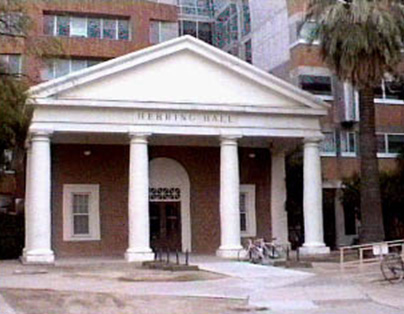
|
|
|
|

|
|||
|
|
|||
|
|
|||
|
Most people are unaware that the largest herbarium in the southwest is located in
the center of the university of Arizona campus. The University of Arizona Herbarium
is located in the second oldest building on campus. It was established in 1850,
the year before the University of Arizona opened its doors. Originally located in
old Main, it contained 700 native plant specimens from southern and central Arizona.
It now contains over 420,000 plant specimens and over 40,000 mycological specimens.
The Herbarium is a plant museum where specimens are dried, preserved and cataloged. It is used by scientists, students, public agencies and homeowners. It is used for many purposes, which include documenting rare and endangered species, evolution and morphology of species that have occurred in the region over the last 150 years. The specimens are sometimes used as a source of DNA for molecular analysis. Herring Hall, where the herbarium is located, was originally built in 1903 as the man’s gymnasium. It was built with a $5000 gift from the Copper Queen mining company. This gift was arranged by William Herring who was the legal consul for the company. Specimens can be submitted to the Herbarium and it is also open daily to the public. Please contact them first if you plan to submit samples. herbarium@ag.arizona.edu 
To contact Barry Tickes go to: btickes@ag.arizona.edu.
|
|||
| Back | |||
|
For questions or comments on any of the topics please contact Marco Pena at the Yuma Agricultural Center.
|
|||
|
Home |
Cotton | Veggies |
Forages | Grains
| Citrus |
Crop x Crop Insects | Diseases| Weeds | Pesticides | Economics | News | Weather | Research | Photos | Contacts | General Info. Copyright © 2001 University of Arizona, College of Agriculture and Life Sciences Webmaster: Al Fournier (acis@ag.arizona.edu) |
|||
